Switching to the cloud means delivering maximum benefits with minimum costs and effort. Unlike traditional software models, SaaS technology has become a universal software application for users because it can be used on any device and with any internet connection. The first SaaS company started to operate in 1999. The marketing value of the Saas industry is rapidly growing, and according to an estimation, the market value in 2021 was around $150 billion. It is expected to reach $208 billion by 2023. The use of software as a service has made innovative revolutions in communication technology. Due to SaaS, people are able to work remotely. SaaS is a compelling alternative to a standard software system where installation is required, including building a server and configuring it. However, the SaaS is already installed and configured, so the application is ready for users within a few hours. If you would like to know about the complete guide of software as a service SaaS, then your search ends here because here we will discuss all the aspects of SaaS in detail.
So Let’s Get Started!
What is SaaS?
SaaS is a procedure of providing web and mobile applications over the internet. The use of the app is subscription-based, and you pay the rent for using the app for your organization. It is a cloud-based software delivery model that allows users to access and use cloud apps, so there is no need to install the application. The cloud providers develop, distribute, and maintain the cloud software and provide automatic updates.
Saas is a user-friendly and complete software solution for organizations that are hosted on the cloud. The distinct feature of Saas is its easy scalability and widespread connectivity to the business world. You will only require cloud migration to reduce the complexity of the infrastructure and increase dexterity.
Standard licensed Software Model
In a standard or traditional software model, the software provides a copy of the software to the customer. Either the customer installs it on the hard drive, or this software is downloadable. This traditional software cannot be deployed immediately like Saas, and the user needs proper training before using the software.
The license includes the number of permissible computers on which the software can be installed, redistribution provisions, and all the geographic and usage restrictions. A licensor also offers training, integration, and implementation services for software operation.
The Saas Model
Alternative to the traditional software model, Saas software is not provided to the user because there is no need to install or download it. It is a cloud computing software. After subscribing to the SaaS software, the customer is provided with the services agreement that includes essential information about accessing the software.
This service agreement includes usage restrictions, resource utilization, number of users, limits of usage volumes, and additional services such as training and integrations. In SaaS, users are provided with a more advanced automated security process to back up their data.
Why Organizations Switch to SaaS
Google, Adobe, HubSpot, MailChimp, MathWorks, Salesforce, Canva, Netflix, Dropbox, Slack, and Spotify are the biggest examples of SaaS applications that are most commonly used. Saas does not drain money from the organizations. SaaS provides smooth, secure, and automatically updated software, maintenance, and regular updates.
As Saas does not require extensive hardware and the maintenance costs are affordable, it is cheaper than the traditional software model. The employer pays low costs for its organization’s cloud software. The global access, simple infrastructure, and no threat of cyberattacks make SaaS the most popular software model.
Key Points in Cloud Migration Planning
Cloud migration is the process of transferring data, infrastructure, applications, and workload from a company’s data centers to cloud applications. The following key steps will help you plan cloud migration:
- Identification of suitable workloads for cloud migration.
- Line up SaaS outcomes with your business goals.
What You Should Know Before Developing SaaS
Extensive Market Research
The competition in the SaaS market is very high, and you should have comprehensive research data and a dedicated development team to compete with the steadily growing SaaS industry. The following points are critical to building the SaaS platform:
- Data of targeted audience and demographics
- Advance data security
- Ease of access and availability
- High scalability and flexibility
- Automated provisions
- Subscription prices
- Multitenancy of software
Client Acquisition Strategy
How you strategize to incentivize your clients will decide how quickly you will establish a successful SaaS platform. You can reach a larger platform of consumers via advertising in blogs, social media platforms, friends, personal contacts, and external referrals. Customer satisfaction is key to client retention. To make your SaaS platform successful, you should spend most of your time on product development and refinement.
Pricing Plan
The pricing plan is another feature that will help you to draft a reliable MVP. By making an impressive pricing plan, you can target the maximum audience. You can offer a free subscription first and then convert your customers to premium subscriptions.
Robust Database
The database design of SaaS applications can hold massive volumes of data, ease migration, and make the application more attractive. The chosen databases should be easy to set up and maintain. While designing the database for the Saas applications, you should consider the following points:
- Response time
- Cost
- Scalability of the model
- The complexity of customizing the database.
- Effect of the tenant’s workload on the application performance.
- Data isolation
- Automatic updates
Conclusion
By cloud migration, the customer gets scalable results from low initial investments. If you want to establish a SaaS platform the critical points listed above will help you a lot. We hope you have developed an understanding of all the aspects and key features of SaaS. Reach out to us if you would like to build any SaaS product. Our expert team here at FuturisTech can build scalable, secure, and feature-rich SaaS products for startups, SMEs and large enterprises.


